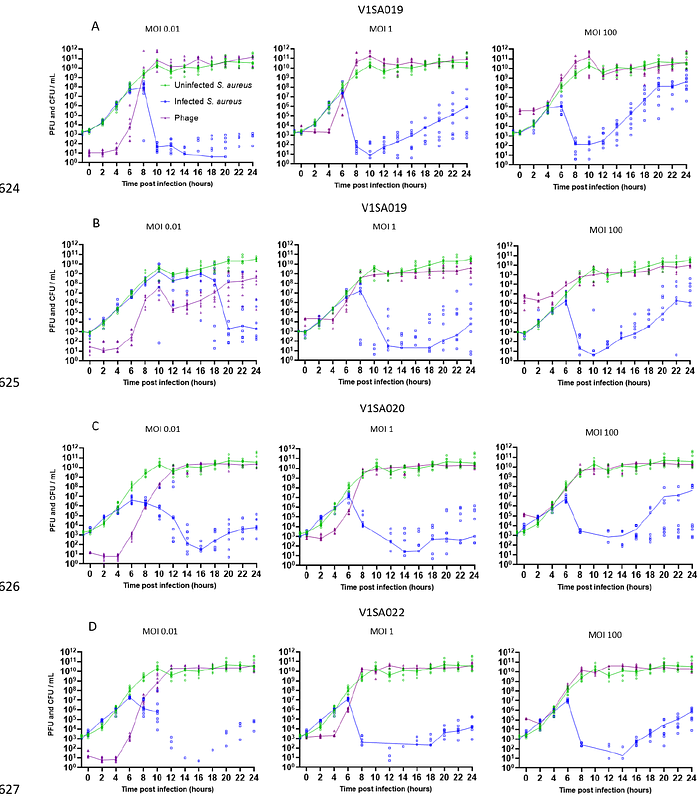Exploring Phage-Staphylococcus aureus Host Dynamics Through Innovative In Vitro Experiment and Pharmacokinetic/pharmacodynamic Modeling

Exploring Phage-Staphylococcus aureus Host Dynamics Through Innovative In Vitro Experiment and Pharmacokinetic/pharmacodynamic Modeling
Royet, K.; Blazere, L.; Helluin, E.; Coignet, L.; Plumet, L.; Bonhomme, M.; Kolenda, C.; Garreau, R.; Valour, F.; Medina, M.; Laurent, F.; Goutelle, S.
AbstractPhage therapy is considered a potential alternative/adjuvant to antibiotics for treating multidrug resistant infections. The clinical implementation of phage therapy is challenging for various reasons, including knowledge gaps in bacteria/phage interactions, particularly the phage\'s self-replication within its bacterial host. Here, we combine in vitro experiments and modeling approaches to explore kinetic between S. aureus and a promising therapeutic phage from our collection. We demonstrate the emergence of a phage-insensitive population, whose final concentration and growth constant is phage dose dependent. Free phages, sensitive bacteria, non-sensitive bacteria and infected bacteria integrate a 4 differential equations model that fits well with time series data. Inundation and proliferation thresholds, as well as rate constants are thus calculated. Results predict that the phage dose used could be critical, with the strange likelihood that higher doses used are less effective. The use and adaptation of this model to specific systems can guide experimental design. Altogether, our results illustrate how such in vitro studies are an essential precursor to understand the kinetic properties of future in vivo experiments.